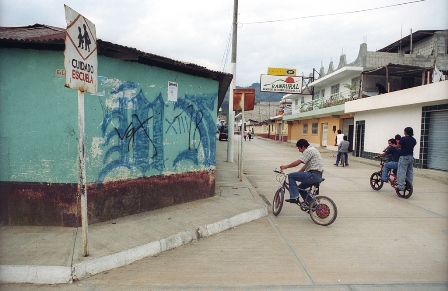The Day of the Girl: Shedding light on women in gangs

In 2011, the United Nations General Assembly agreed to designate 11 October as the International Day of the Girl Child, or the ‘Day of the Girl.’ The day promotes girls’ rights and addresses various forms of inequality, discrimination and abuse suffered by girls across the world. On this day, Interpeace has chosen to highlight the particular situation faced by girls and young women in gangs in Central America.
Central America - shedding light on women in gangs
Although it is estimated that the number of gang members has fallen considerably in the last years, gang violence has significantly increased in the Central American region.
In a recent report, Isabel Aguilar Umaña, Regional Coordinator of Interpeace’s Central American Youth Programme, and Jeanne Rikkers, Regional Research Coordinator of Interpeace’s Central American Youth Programme, have explored an interesting angle of gang life that rarely makes the headlines: the role of young women in the male-dominated gang culture.
The report, entitled Violent Women and Violence Against Women (PDF, English), focuses on El Salvador, Guatemala and Honduras. The exploratory study is based on a series of interviews with both active and former female gang members in the three countries between 2008 and 2011.
Recommendations for prevention
At a time when alarming reports of violence against women have been recorded, Interpeace’s ‘Violent Women and Violence Against Women’ study issues six policy recommendations for the national and international level. The recommendations suggest that in high-crime areas, early signs of vulnerability and family violence must be detected and dealt with swiftly by professionals. What is more, it proposes that programmes reaching out to girls and teenage women in particular must be expanded to provide them with real opportunities and strengthen their self-esteem.
Why young women join gangs
The report explores the possibilities of preventing young girls and teenage women from joining gangs. Furthermore, the study investigates the reasons why women choose to join these organizations. Isabel Aguilar Umaña explains: “Oftentimes young women, most of them poor, try to escape domestic violence and long for protection, affection, and recognition.” Interestingly, the report finds that many women who join gangs neither felt happy before they joined, nor when they were active members, nor even after having left the gangs.
Women in a male-dominated universe
The role of female gang members has dramatically changed over the past years. While women have always been connected to maras and gangs in some ways, mostly by affiliation to an actual member, for example as mothers, sisters or girlfriends, they have traditionally occupied a marginal role in the gang culture. They have fulfilled traditional roles imposed by the patriarchal model. “Recently, though,” Jeanne Rikkers points out, “women have actively joined the gangs by initiation and have taken on a plethora of additional functions. The additional tasks include hiding weapons, acting as drug mules and participating in extortion, often taking advantage of their ‘innocent’ image.”
Once a member, it is difficult to leave the gangs, as it is generally viewed as a betrayal of the sworn life-long loyalty that gangs require. Nevertheless, the study has found that women sometimes do decide to leave the world of violence and abuse due to pregnancy or religious reasons.
Reversing a downward spiral
To prevent more and more people from becoming involved in the downward spiral of youth violence, Interpeace’s Central American Youth Programme helps governments and civil society to address these important issues by developing holistic and inclusive policies and prevention measures.
